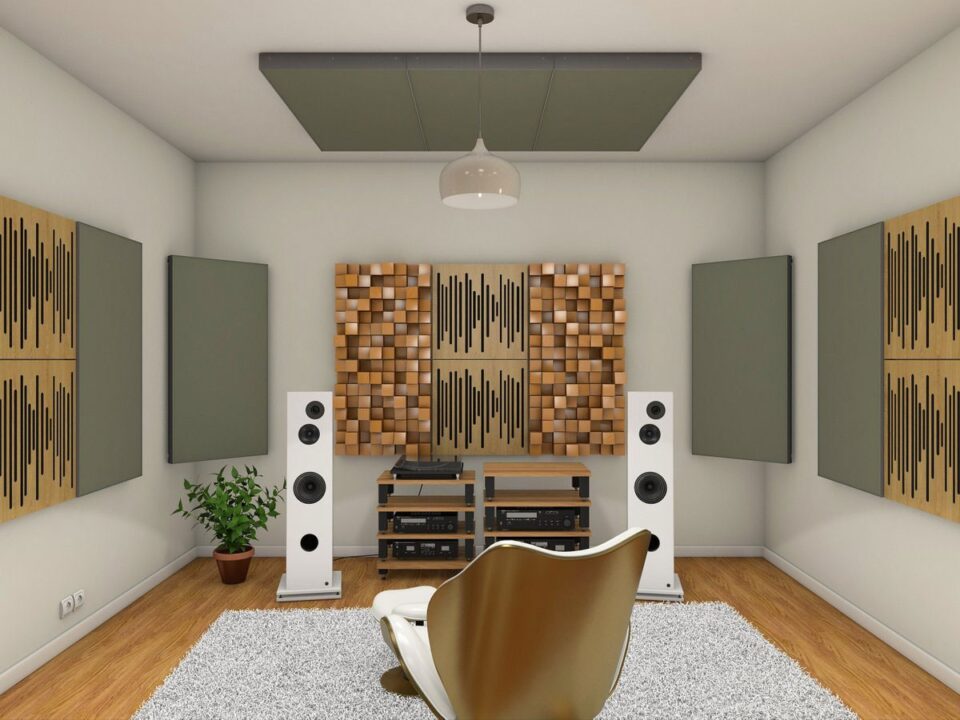Suppose you are part of the sound engineering or music production community. In that case, chances are you’re quite familiar with the spongy, wedge-shaped, or egg-crate style material known as acoustic foam.
This foam has been a staple for tuning room acoustics, soundproofing recording spaces, and even reducing noise in homes and offices. However, what many users aren’t fully aware of is the potential fire risk associated with acoustic foam and the importance of adhering to fire safety standards.
Acoustic Foam and Its Common Uses in Soundproofing.
Acoustic foam is a lightweight material with excellent sound-absorbing properties, making it an invaluable tool for creating an optimal listening environment. Its ability to reduce echoes and background noise is why you’ll find it in places like recording studios, home theatres, and even the interior of instruments.
Despite its sound-deadening benefits, acoustic foam is highly combustible. When ignited, it can burn rapidly, releasing a significant amount of heat, smoke, and toxic gases. This poses a serious risk in any enclosed space where the foam is installed.
Industry Standards and Regulations for Acoustic Foam Fire Safety.
The safety of acoustic foam is closely regulated, especially when used in commercial spaces. In the United States, the National Fire Protection Association (NFPA) and the International Building Code (IBC) have established fire codes that involve the use of materials like acoustic foam.
These codes determine where and how the foam can be used to ensure it meets specific fire safety standards. Acoustic foam materials should be tested and certified according to ASTM (American Society for Testing and Materials) standards.
Practical Safety Tips for Installing and Using Acoustic Foam.
To stay safe, ensure you’re purchasing acoustic foam that has been properly tested and certified for fire safety. When installing, follow the manufacturer’s recommendations, and keep these tips in mind:
- Leave no gaps: Cover as much of the available wall space as needed without leaving gaps. This prevents flammable material from concentrating in exposed areas.
- Inspection and maintenance: Regularly inspect your acoustic foam for damage or wear. Even a small tear could potentially expose the underlying foam to fires, allowing it to spread more easily.
- Proper spacing: Mount foam panels with the appropriate spacing recommended by the manufacturer. This ensures that, in the event of a fire, airflow prevents the flames from readily transferring from one panel to another.
- Keep clear of heat sources: Never install foam too close to heat sources such as lamps or electronics. The foam can rapidly ignite, creating a potentially dangerous situation.
Emergency Preparedness and Response Strategies.
It’s critical to have a fire safety plan in place, especially in spaces outfitted with acoustic foam. This plan should include:
- Installation of smoke detectors: Strategically place smoke detectors in and around areas where acoustic foam is used to ensure early detection of fire.
- Accessible fire extinguishers: Keep fire extinguishers readily available and make sure they are suitable for electrical fires and other types potentially caused by or affecting the foam.
- Evacuation plan: Establish and practice a clear evacuation route for all occupants of the building. Knowing how to quickly and safely exit the premises can save lives in the event of a fire.
- Regular training and drills: Conduct fire safety training and regular drills to ensure that everyone knows how to respond in case of an emergency. This includes the correct use of fire extinguishers and adherence to the evacuation plan.
Incorporating these preparedness and response strategies, the risk associated with the use of acoustic foam can be significantly mitigated, ensuring a safer environment for all.
Conclusion: The Importance of Adhering to Acoustic Foam Fire Safety Standards.
The takeaway is clear: when it comes to acoustic foam, safety must be your top priority. Whether you’re a professional sound engineer or a hobbyist setting up a home studio, understanding and following the fire safety regulations is crucial for protecting not only your equipment but also your life and the lives of others.
Always purchase certified acoustic foam, follow the manufacturer’s guidelines for installation, and stay informed about the regulations in your area. Remember, sound quality is important, but not at the expense of safety.

